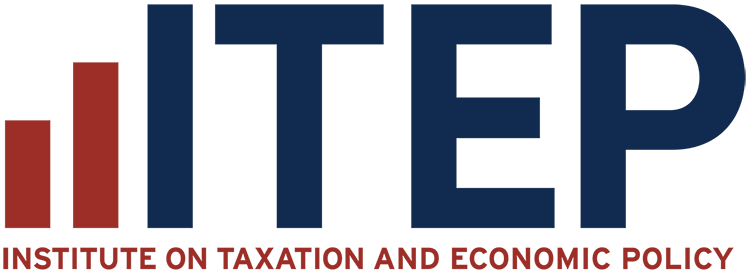
Tax Credits for Workers and Families
State lawmakers seeking to make residential property taxes more affordable have two broad options: across-the-board tax cuts for taxpayers at all income levels, such as a homestead exemption or a tax cap, and targeted tax breaks that are given only to particular groups of low- and middle-income taxpayers. One such targeted program to reduce property taxes is called a "circuit breaker" because it protects taxpayers from a property tax "overload" just like an electric circuit breaker: when a property tax bill exceeds a certain percentage of a taxpayer's income, the circuit breaker reduces property taxes in excess of this "overload"…
Reducing the Cost of Child Care Through State Tax Codes
September 14, 2016 • By Aidan Davis, Meg Wiehe
Low- and middle-income working parents spend a significant portion of their income on child care. As the number of parents working outside of the home continues to rise, child care expenses have become an unavoidable and increasingly unaffordable expense. This policy brief examines state tax policy tools that can be used to make child care more affordable: a dependent care tax credit modeled after the federal program and a deduction for child care expenses.
Rewarding Work Through State Earned Income Tax Credits
September 14, 2016 • By Aidan Davis, Lisa Christensen Gee, Meg Wiehe
The Earned Income Tax Credit (EITC) is a policy designed to bolster the earnings of low-wage workers and offset some of the taxes they pay, providing the opportunity for struggling families to step up and out of poverty toward meaningful economic security. The federal EITC has kept millions of Americans out of poverty since its enactment in the mid-1970s. Over the past several decades, the effectiveness of the EITC has been magnified as many states have enacted and later expanded their own credits.
Rewarding Work Through State Earned Income Tax Credits
February 11, 2016 • By Aidan Davis, Lisa Christensen Gee, Meg Wiehe
See the 2016 Updated Brief Here Read the brief in a PDF here. that time, the EITC has been improved to lift and keep more working families out of poverty. The most recent improvements enhanced the credit for families with three or more children and for married couples. First enacted temporarily as part of the […]
The U.S. Census Bureau released data in September showing that the share of Americans living in poverty remains high. In 2014, the national poverty rate was 14.8 percent - statistically unchanged from the previous year. However, the poverty rate remains 2.3 percentage points higher than it was in 2007, before the Great Recession, indicating that recent economic gains have not yet reached all households and that there is much room for improvement. The 2014 measure translates to more than 46.7 million - more than 1 in 7 - Americans living in poverty. Most state poverty rates also held steady between…
Rewarding Work Through State Earned Income Tax Credits
September 17, 2015 • By Aidan Davis, Lisa Christensen Gee, Meg Wiehe
Despite some economic gains in recent years, the number of Americans living in poverty has held steady over the past four years. At the same time, wages for working families have remained stagnant and more than half of the jobs created by the economic recovery since 2010 were low-paying, mostly in the food services, retail, and employment services industries. Our country's growing class of low-wage workers often faces a dual challenge as they struggle to make ends meet. First, wages are too low and growing too slowly - despite recent productivity gains - to keep up with the rising cost…
Read the Report in PDF Form The Census Bureau released data in September showing that the share of Americans living in poverty remains high. In 2013, the national poverty rate was 14.5 percent, a slight drop from last years’ rate of 15 percent and the first decline since 2006.1 However, the poverty rate remains 2.0 […]
The simplest, most effective, and most targeted way to begin to counteract regressive state tax codes is a refundable state Earned Income Tax Credit (EITC). Twenty-five states and the District of Columbia already have some version of a state EITC. Each one is modeled on the federal credit, making it easy for taxpayers to claim and simple for state tax officials to administer. This report explains how all states - even those who already have some form of the credit - can use the state EITC as a tool for improving the fairness of their state tax code.
New Census Bureau data released this month show that the share of Americans living in poverty remains high, despite other signs of economic recovery. The national 2012 poverty rate of 15 percent is essentially unchanged since 2010 , but still 2.5 percentage points higher than pre-recession levels. This means that in 2012, 46.5 million, or about 1 in 6 Americans, lived in poverty.1 The poverty rate in most states also held steady with five states experiencing an increase in either the number or share of residents living in poverty while only two states saw a decline.2
The tax systems of virtually every state are pushing poor families deeper into poverty. But state tax systems also have the potential to play a role in fighting poverty. The four low-income tax credits discussed in this report are among the most cost-effective anti-poverty strategies available to lawmakers: the Earned Income Tax Credit, property tax circuit breakers, targeted low-income tax credits, and child-related tax credits. This report identifies the states in which each of these credits is offered, and provides specific recommendations tailored to policymakers in each state as they work to combat poverty.
Low-wage workers often face a dual challenge as they struggle to make ends meet. In many instances, the wages they earn are insufficient to encourage additional hours of work or long-term attachment to the labor force. At the same time, most state and local tax systems impose greater responsibilities on poor families than on wealthy ones, making it even harder for low-wage workers to move above the poverty line and achieve meaningful economic security. The Earned Income Tax Credit (EITC) is designed to help low-wage workers meet both those challenges. This policy brief explains how the credit works at the…
Low- and middle-income working parents frequently spend a significant portion of their income on child care. As an increasing number of single parents take jobs, and as the number of two-earner families continues to rise, child care expenses are an unavoidable and increasingly unaffordable expense for these families. This policy brief looks at one way of making child care more affordable: the dependent care tax credit offered by the federal government and many states.
My testimony focuses on House Bill 581, which would create a Missouri Earned Income Tax Credit (EITC). In particular, my testimony will discuss the impact of this bill on the overall fairness of Missouri’s tax system. Read the Full Report (PDF)
Credit Where Credit is (Over) Due: Four State Tax Policies Could Lessen the Effect that State Tax Systems Have in Exacerbating Poverty
September 15, 2010 • By Meg Wiehe
The ongoing recession has had an unrelenting impact on families and communities in every state across the country. Millions of Americans are without work and in many cases those with jobs are experiencing reduced work hours and wages. New poverty figures from the US Census suggest that the road to economic security will be a […]
Proposed Repeal of Refundable Low Income Credit Would Hurt the Poorest Georgians
March 25, 2010 • By ITEP Staff
Earlier this week, the tax writing committee in the Georgia House of Representatives quietly approved a bill, HB 1219, that would increase Georgia taxes by about $20 million a year by paring back a tax credit that only affects the very poorest Georgians. The bill’s proponents have repeatedly implied that the beneficiaries of the existing […]
My testimony focuses on Legislative Bill 683, which would expand the Nebraska Earned Income Tax Credit (EITC). In particular, my testimony will discuss the impact of this bill on the overall fairness of Nebraska’s tax system. Read the Full Report (PDF)
State and local tax policies can often make it more difficult for low- and moderate-income individuals and families to make ends meet. Through the use of a variety of targeted tax credits, state lawmakers can help improve both the fairness of their tax systems as well as the standard of living for low- and moderate-income residents. ITEP resources on tax credits for workers and families provide general and state-specific information about the mechanics of these credits and options for reform including state Earned Income Tax Credits, property tax circuit breakers and child-related tax credits.
